Wall of History
| Year | Event | |
|---|---|---|
|
1300 |
Origin of the word slave: It is thought that the word "slave" derives from "Slav": prisoners from Slavonic tribes of Europe captured by Germans and sold to Arabs during the middle Ages. |
|
|
1492 |
Christopher Columbus |
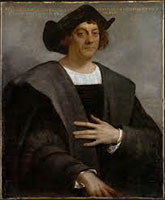 |
|
1619 |
Dutch ship sailed in Jamestown, VA with 20 Africans as slaves |
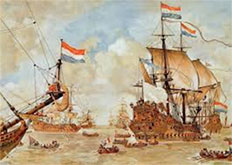 |
|
1636 |
The Pequot War: The war was between English colonists and the Pequot Indians; The English developed a tactic: deliberate attack on noncombatants to terrorize the enemy. This war led to the virtual obliteration of the Pequot tribe. |
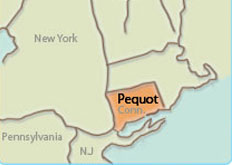 |
|
1680 |
White appears in colonial laws: Early colonial laws refer to Christians or Englishmen, rather than whites. Around the time of Bacon's Rebellion in 1676, new laws begin to appear, separating Black slaves from European indentured servants. |
|
|
1776, July 4 |
Declaration of Independence: American Revolution was a way of aggressively establishing a new nation on land that had been occupied for thousands of years by various Indian tribes. |
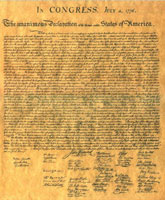 |
|
1776 |
“Birth of "Caucasian": Johann Blumenbach, one of many 18th-century naturalists, lays out the scientific template for race in On the Natural Varieties of Mankind. Although he opposes slavery, he maps a hierarchical pyramid of five human types, placing "Caucasians" at the top because he believes a skull found in the Caucasus Mountains is the "most beautiful form...from which...the others diverge." This model is widely embraced, and Blumenbach inadvertently paves the way for scientific claims about white superiority. http://www.pbs.org/race/003_RaceTimeline/003_01-timeline.htm |
|
|
1777 |
Vermont, the first American state to abolish slavery. |
|
|
1790 |
Naturalization Act: provided the first rules to be followed by the United States in the granting of national citizenship. This law limited naturalization to immigrants who were “free white persons of good character”. |
|
|
1801-1803 |
Thomas Jefferson: Wrote - it was the destiny of American white men to “cover the whole northern, if not southern, continent with a people speaking the same language, governed in similar forms, and by similar laws; nor can we contemplate with satisfaction either blot or mixture on that surface”. Appalachian Mountains to Rockies were bought from France. |
|
|
1829 |
David Walker, a freed Black man living in Boston published “Walker’s Appeal”. Excerpts of the appeal could be found here: http://www.pbs.org/wgbh/aia/part4/4h2931t.html |
|
|
1830s |
Trail of tears - Indian Removal Act: At the beginning of the 1830s, nearly 125,000 Native Americans lived on millions of acres of land in Georgia, Tennessee, Alabama, North Carolina and Florida. Working on behalf of white settlers who wanted to grow cotton on the Indians’ land, the federal government forced them to leave their homelands and walk thousands of miles to a specially designated “Indian territory” across the Mississippi River. This difficult and sometimes deadly journey is known as the Trail of Tears. |
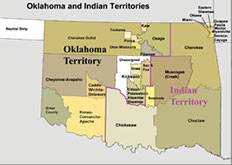 |
|
1831 |
Nat Turner’s uprising to resist slavery and gain freedom: Nat Turner’s rebellion was one of the largest slave rebellions ever to take place in the United States, and it played an important role in the development of antebellum slave society. |
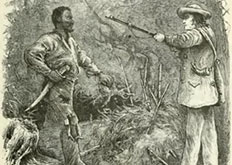 |
|
Early 19th Century |
Underground railroads: There were “conductors” who would help slaves flee northwards. The most famous conductors were Levi Coffin and Harriet Tubman who led more than hundreds of slaves to freedom. |
|
|
1846-1848 |
Annexation of Texas - Mexican American War |
|
|
1848 |
First Women’s Right Convention, Seneca Falls, NY |
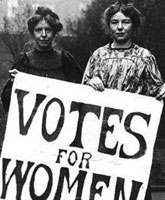 |
|
1857 |
African Americans denied citizenship: In the Dred Scott v. Sanford decision, the U.S. Supreme Court declares that "Negroes," whether free or enslaved, are not citizens. |
|
|
1861-1865 |
Civil War |
|
|
1862 |
38 Native men were hung in Mankato as ordered by Abraham Lincoln |
|
|
1863 |
Emancipation Proclamation: President Lincoln signs the Emancipation Proclamation stating that all slaves will be free. |
|
|
1864 |
Sand Creek Colorado: 700 soldiers of the U.S. Army killed of hundreds of Natives, including children, asleep in their tents. |
|
|
1868 |
14th Amendment guarantees equal rights: the amendment extends citizenship to African Americans and attempts to heal Civil War wounds by emphasizing national unity. |
|
|
1870 |
Right to vote - Constitution gives Black men right to vote. |
|
|
1882 |
The Chinese Exclusion Act |
|
|
1886 |
The labor movement - 350,000 workers throughout the nation went to strike for 8-hour workday |
|
|
1887 |
Jim Crow segregation begins |
|
|
1890 |
Sioux Indian families, camping near Wounded Knee Creek in South Dakota were attacked by U.S. soldiers; more than 350 people died in the massacre. |
|
|
1894 |
Eugene V. Debs led the Pullman Strike |
|
|
1896 |
Plessy v. Ferguson |
|
|
1905 |
African Americans demand equal rights: W.E.B. Du Bois - The Souls of Black Folk published in 1903: “The problem of the twentieth century is the problem of the color-line – the relation of the darker to the lighter races of men in Asia and Africa, in America and the islands of the sea.” |
|
|
1909 |
NAACP was established: The nation's oldest, largest and most widely recognized grassroots-based civil rights organization |
|
|
1920 |
Duluth Lynching: Three African American circus workers were taken out of jail by more than 10,000 people and were lynched in Duluth MN who were accused of gang-raping a white woman. |
|
|
1924 |
Immigration Act |
|
|
1928 |
The Meriam Report |
|
|
1940s-1960s |
Indian Termination Policy |
|
|
1941 |
Pearl Harbor: President Roosevelt signed an executive order for the confinement of 110,000 Japanese Americans to concentration camps, which included people who were born in the United States. |
|
|
1954 |
Legal segregation ends: In the wake of the Brown v. Board of Education decision, civil rights advocates led by Martin Luther King, Jr. organize a yearlong boycott of city buses in Montgomery, Alabama, to protest the state's resistance to school integration. What begins as a struggle over schools spreads to public transportation, voting, and all areas of social life. |
|
|
1955 |
Rosa Parks arrested: In Montgomery, Alabama, Rosa Parks was arrested because she refused to give up her seat for a white man. Dr. Martin Luther King Jr. led the bus boycott which lasted for 381 days protesting the segregation. |
|
|
1962 |
United Farm Workers Association was created by Cesar Chavez. This organization was created to demand respect the Chicano culture and their rights. |
|
|
1963 |
MLK “I have a dream” |
|
|
1965 |
Selma, Alabama: Peaceful march from Selma to Montgomery (54 miles) was led by Dr. Martin Luther King Jr. to demand rights to vote for African American citizens. |
|
|
1967 |
Loving v. Virginia: The case of interracial marriage between Mildred and Richard loving |
|
|
1968 |
Indian Civil Rights Act |
|
|
1975 |
After Vietnam War: Thousands of refugees came to the US from Cambodia, Laos and Vietnam and often were victims of racial discrimination. |
|